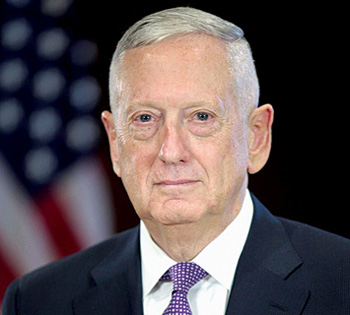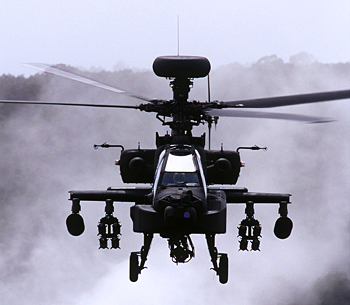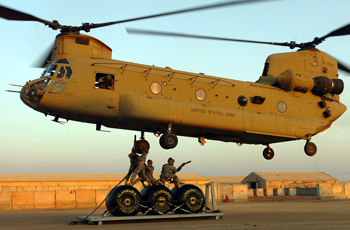INDIAN ARMED FORCES CHIEFS ON
OUR RELENTLESS AND FOCUSED PUBLISHING EFFORTS

SP Guide Publications puts forth a well compiled articulation of issues, pursuits and accomplishments of the Indian Army, over the years

I am confident that SP Guide Publications would continue to inform, inspire and influence.

My compliments to SP Guide Publications for informative and credible reportage on contemporary aerospace issues over the past six decades.
- Prime Minister witnesses 'Bharat Shakti' – a Tri-Services Firing and Manoeuvre Exercise in Pokhran, Rajasthan
- Interim Defence Budget 2024-25 — An Analysis
- Union Defence budget 2024
- Prime Minister Modi Commemorates Indian Navy Day in a Grand Ceremony
- Prime Minister Modi Flies in the LCA Tejas
- New Chapter in India-Italy Defence Ties
- Airpower beyond Boundaries
Indo-US defence ties — Retain the high
 |
By Lt. General P.C. Katoch (Retd) Former Director General of Information Systems, Indian Army |



There was some speculation as to how the Indo-US defence relationship would pan out under the new US President, as relationships do undergo change with new administrations. Not that there was any reason for apprehensions considering the indications from the US post-election of President Donald Trump. President Trump had already called Prime Minister Narendra Modi on January 24, four days after his swearingin as President, wherein he emphasised that the US considers India a true friend, and he looked forward to hosting Prime Minister Modi in the US later this year. The two leaders reportedly discussed opportunities to strengthen the bilateral partnership in broad areas like economy and defence.
Then in February 9, the new US Defense Secretary General James Mattis called up Defence Minister Manohar Parrikar. General Mattis committed to build upon the tremendous progress in bilateral defence cooperation made in recent years, underscoring the strategic importance of the US-India relationship and India’s role in advancing global peace and security. The Pentagon Press Secretary Captain Jeff Davis released a press statement after the conversation saying, “Secretary Mattis and Minister Parrikar affirmed their commitment to sustain the momentum on key bilateral defence efforts to include the defence technology and trade initiative.” Davis said after the phone call between the two leaders which took place on February 8.
Earlier, Defence Minister Parrikar had written a letter congratulating General Mattis after his appointment. However, dates of a future meeting between Parrikar and Mattis are not indicated yet, especially since some changes are expected in the US defence set up. For example, the portfolio of Frank Kendall, Under Secretary for Acquisition, Technology and Logistics (Defence Technology and Trade Initiative (DTTI) with India) is likely to be bifurcated. Indo-US defence relationship have been growing strong with fluid geopolitical dynamics of the region and the Indo-Pacific, including the aggressive act of a bullish China. For example, while Chinese nuclear submarines are prowling the Indian Ocean and docking at Pakistani ports, Admiral Harry B. Harris, Commander of the US Pacific Command, had stated on January 19, 2017, that US and Indian navies have been sharing information on the movement of Chinese submarines and ships in the Indian Ocean. He also said India should be concerned about the increasing Chinese influence in the region.
The ‘Make in India’ project offers tremendous scope for enlarging the Indo-US defence relationship. The US had proposed in December 2016 joint development and production of futuristic military helicopters as well as infantry combat vehicles in the first such big-ticket programmes under the DTTI. The US had suggested that the future infantry combat vehicle (FICV) project can be a trilateral venture with the inclusion of Israel.
The US must review its assistance to Pakistan as the hatchery of Islamic terrorism, which is backed by China. Taming the ‘deep state’ of Pakistan cannot be ignored if the Indo-US defence partnership is really to grow.
However, this offer comes at a time when India is hiccupping its way through and indigenous FICV project with six bidders in the fray: OFB; L&T; Mahindra; Pipavav Defence & Offshore Engineering; Tata Motors-Bharat Forge consortium; and Tata Power SED-Titagarh Wagons consortium. Whether India will let these bidders free to pick up their foreign partners (including American or Israeli or both) or review the project afresh in view of the US offer is the moot question. Reviewing the FICV project afresh will certainly delay the project by another few years.
The second US offer is for participation in its future vertical-lift (FVL) aircraft programme, in which India has already shown interest. This programme includes development of five different helicopters or ‘capability sets’ over the next 15 years at a cost of around $8 billion. However, India is unlikely to go for all the five types of helicopters, which range from lightweight to heavy-lift ones.
India has already inked $3.1 billion deal for 22 Apache attack and 15 Chinook heavy-lift helicopters from the US, which are slated for delivery in 2019-20. At the same time, India and Russia have finalised joint production of 200 Kamov 226T light-utility helicopters worth $1 billion albeit getting this joint venture (JV) appears delayed, with Russians showing concern over the delay during the recent visit of the National Security Advisor Ajit Doval to Russia. The problem may well be finances with the second successive negative defence allocation this year.
The Indian armed forces are in the hunt for 1,200 helicopters of different types over the next 15-20 years to replace their ageing fleets. So while the Hindustan Aeronautics Limited is also independently tasked to develop 187 Kamov type helicopters, the requirements are large.
The US can certainly bring down its own defence budget by moving part of its arms industry to India, even as some of the skilled technicians may have to be brought in till skill development picks up in India. At the same time, the US must review its assistance to Pakistan as the hatchery of Islamic terrorism, which is backed by China. Taming the ‘deep state’ of Pakistan cannot be ignored if the Indo-US defence partnership is really to grow.





